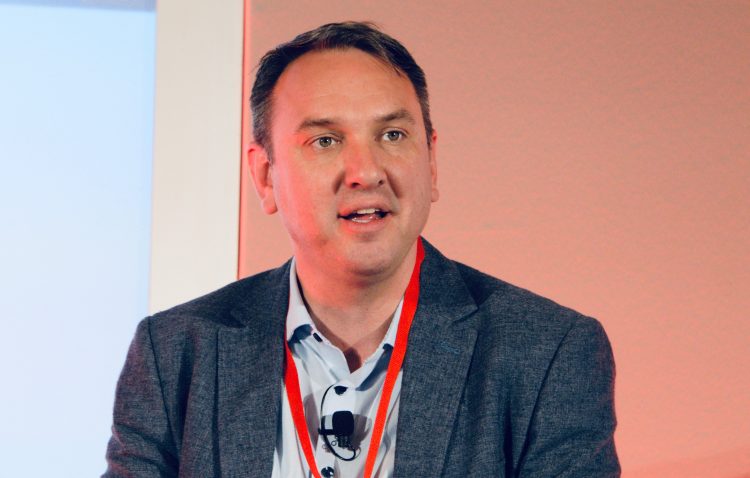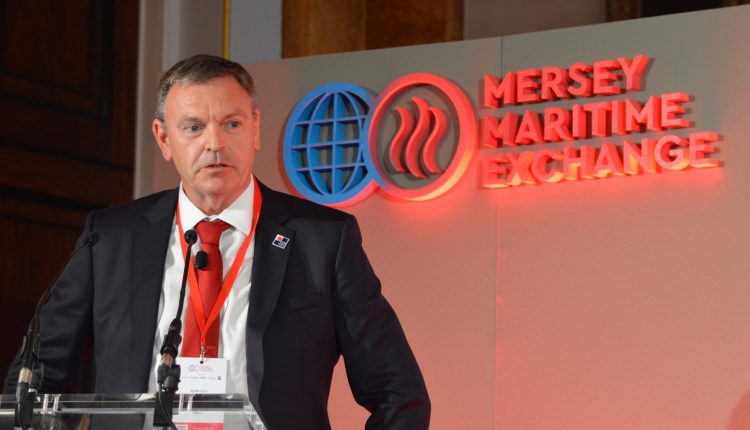Freeport can ‘supercharge’ economic development
Going live this summer, Liverpool city region Freeport attracts ‘phenomenal’ interest from global investors and UK ports chief says it can ‘supercharge’ economic development. Tony McDonough reports

Liverpool city region’s £25m Freeport goes live this summer and the head of the British Ports Association (BPA) says it can “supercharge” economic development.
BPA chief executive Richard Ballantyne was speaking at the Maritime Exchange conference in Liverpool. He said UK ports were already “drivers of growth” in coastal communities.
The BPA represents the interests of more than 100 port members from around the UK. They cover more than 400 ports, terminal operators and port facilities and include businesses operating within the Liverpool city region.
“We operate independently from Government and we don’t need too much from them,” said Mr Ballantyne. “We just need the right business and regulatory regime to help us operate effectively.
“We lobbied for the Freeports and we believe they can supercharge our economic development. We have eight Freeports at the moment and we need to roll these out further to other locations.”
Mr Ballantyne was speaking on a panel event at the Maritime Exchange, organised by Mersey Maritime and Maritime UK. The panel – on regional development – also heard from John Lucy, director of the Liverpool City Region Freeport.
Over the summer the Liverpool City Region Freeport will go live with an initial £25m of funding from the Government. It is one of eight new regional Freeport zones announced by Chancellor Rishi Sunak in March 2021.
Freeports are designated zones where normal tax and customs rules do not apply. These can be airports or other hubs as well as maritime ports. At a Freeport, imports can enter with simplified customs documentation and without paying tariffs.
READ MORE: Mersey maritime sector now worth £5bn a year
Liverpool had a Freeport until 2012 but this new incarnation will be much more ambitious. Rather than just focused on the port itself it will encompass multiple locations across the city region and beyond.
They include the Port of Liverpool, which will be the primary customs site, and three tax and customs sites – Wirral Waters, the £100m Parkside logistics scheme, and the 3MG multi-modal terminal at Widnes.
Other Freeport locations include Liverpool John Lennon Airport, Borchard Lines container terminal, Port Garston, Port Weston, Port Salford and Stobart rail terminal as well as a number of other sites.
It will focus on investment in manufacturing and logistics, advanced manufacturing, innovation and research and development activities.


Addressing the conference, John Lucy said interest from potential investors around the world had been “phenomenal”. He added: “We already have 600 hectares of space and, with the inquiries we are seeing, we could double that.
The Freeport has the potential to condense 20 years of growth into 10 years with the creation of 10,600 new jobs. It could also add £1.3bn in annual Liverpool city region GVA every year.
There was strong interest, John added, in existing business sectors such as automotive, shipbuilding and life sciences. But he also said there are new and emerging business sectors overseas that are interested in investing in the city region.
To capitalise on this interest John and his team will partner up with Mersey Maritime later this year on a trade mission to Washington DC. John added: “We are seeing massively strong opportunities to bring investment into the Liverpool city region.
“We have to be at the front of the race to attract international investors. On this mission we will be looking to bring North American investors into Liverpool. We are bringing the world to the Liverpool city region.”
There was also other news on the panel from Thomas White, head of maritime & ports at the Connected Places Catapult. He revealed details of a new project in partnership with Mersey Maritime and leading consultancy Royal HaskoningDHV.
He outlined “a vision of our renewed connectivity through waterways in UK regions” with the Moving on the Mersey project focused on the River Mersey. Its aim is to find ways of making better use of the River Mersey for freight, tourists and commuters.
“In recent decades we saw declines in parts of our maritime economy,” said Mr White. “For example, there were fewer shipyards. However, now is the time for regeneration. The maritime economy is growing again and we are seeing a renewed drive in the sector.”
Next to speak was Laura Marquis, deputy director, logistics and supply chain policy division, Logistics and Borders Directorate at the Department for Transport. She talked about the difficulties of the past couple of years due to the COVID-19 pandemic but added: “Our port sector and supply chains have shown great resilience.
“It is encouraging now to see our ports making investments… we have published our Future Freight Plan. This recognises the impact the freight network has on our economy. It is about giving the resilient, effective freight network the attention it deserves.”
